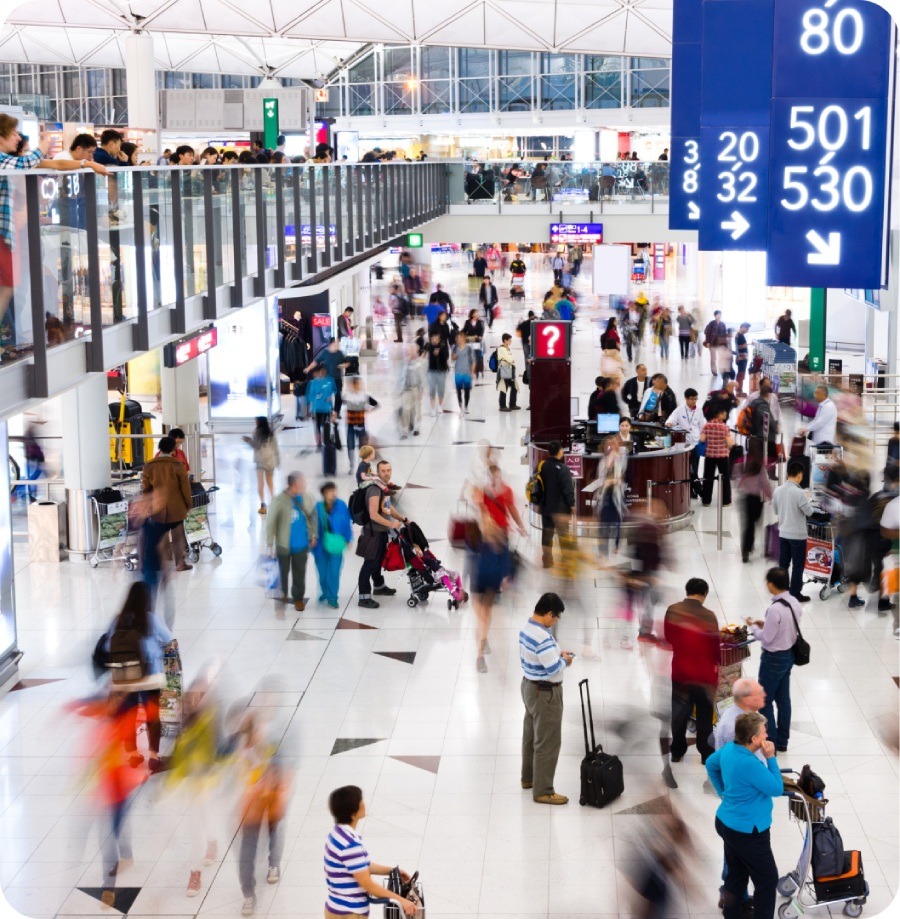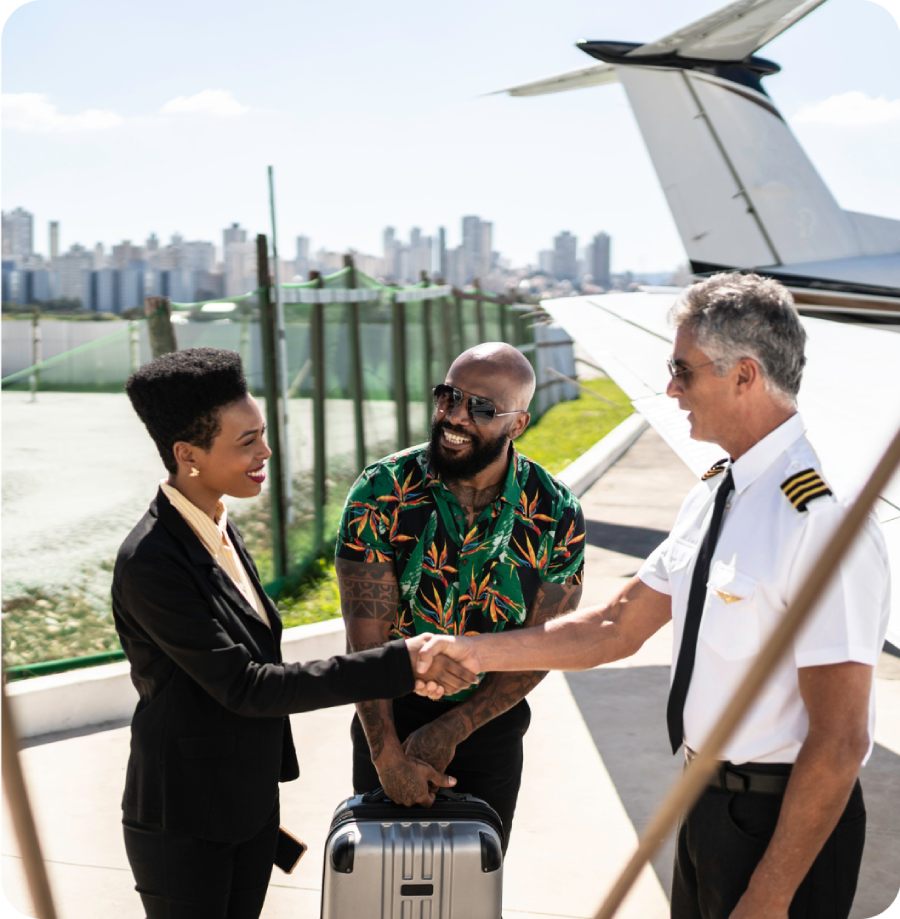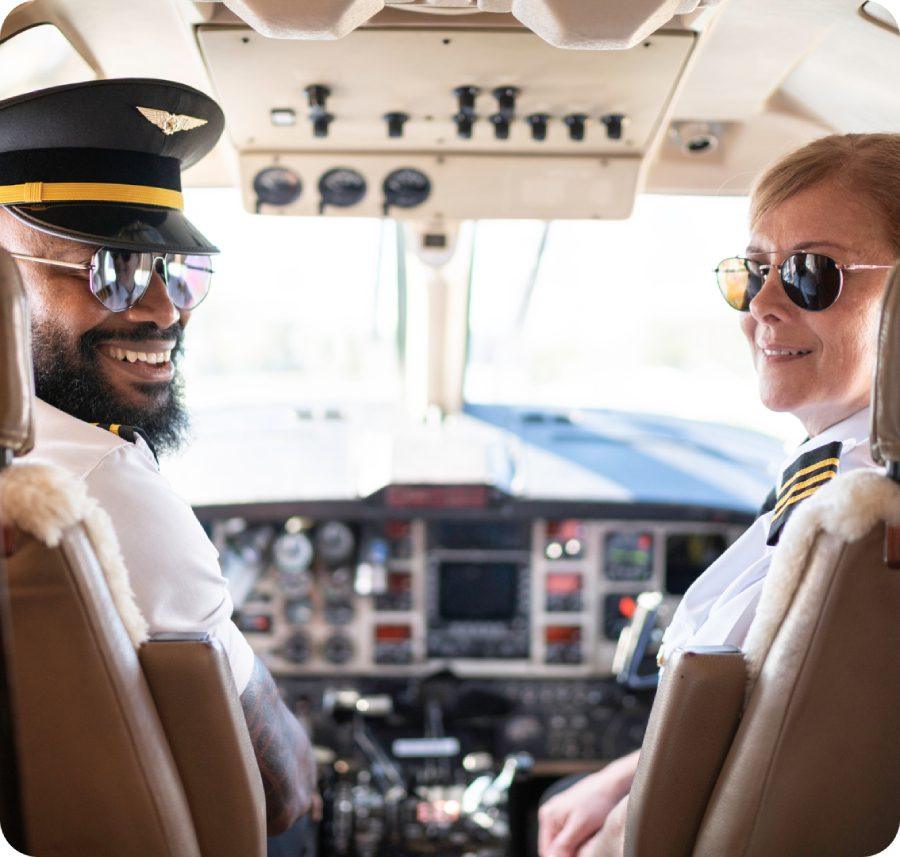Are private jets safe? Many people assume that privately owned aircraft are inherently riskier than commercial jetliners. Perhaps it’s because of their size or the presumption that the industry doesn’t follow the same safety standards. But, if we look at the numbers, these assumptions couldn’t be further from the truth.
Safety measures for private jets are federally regulated, making jets one of the safest means of transportation. And, as private jet accident statistics demonstrate, flying via private plane is safer than travel by car, bus, or train — and often safer than commercial flights simply because you don’t need to go through public airports.
But don’t take our word for it. Below, you’ll find relevant information about private jet accident rates, safety regulations, and answers to your most frequently asked questions about private aviation.
Safety regulations and standards for private jets.

Private jet safety standards have significantly evolved over the last several decades. First, all private jet providers in the US must be certified by the Federal Aviation Authority (FAA). Part 91 and 135 of the Code of Federal Regulations apply to private and chartered private jet services, respectively. The code regulates everything from aircraft to crew to maintenance.
Secondly, the FAA also requires inspections (sometimes completed as progressive inspections) at each 100-hour interval of flight. These ensure the craft remains airworthy and that all systems are maintained in full working order.
Finally, there are several internationally recognized third-party organizations that set additional standards for safety, training, and industry best practices for private service providers:
- International Standard for Business Aircraft Operations (IS-BAO)
- Air Charter Safety Foundation (ACSF)
- Aviation Research Group US (ARGUS)
- Wyvern
If you fly private, look for one or more of these seals of approval listed on a provider’s website. At Volato, we are committed to safety and crew training, and accordingly, we have achieved the highest possible ARGUS (Platinum) certification and IS-BAO Stage 3.
Private jet safety records and industry statistics.
In 2022, there were more than five million private flights (The Guardian) and 22,000 active jets worldwide (Simply Flying). That’s millions of hours logged by tens of thousands of jets — and it’s still safer than car, bus, or train travel.
Whether you fly privately or with a commercial airline, the aviation industry as a whole has witnessed a dramatic decrease in accidents since the 1980s, including a steep decline in related fatalities and injuries.
According to the Simply Flying report, there were a total of 1,085 general aviation accidents that occurred over 19,454,467 flight hours in 2022. This resulted in a rate of 1.049 accidents per 100,000 flight hours. This number is on a steady decline. Simply Flying also reported a 12.7 percent decrease in private jet accidents between 2000 and 2019.
While commercial and corporate air travel are both considered safe, the National Business Aviation Association analyzed historic business and corporate travel statistics and found that corporate flights were measurably safer than commercial flights.
Corporate flights were designated as those with a two-person, professional crew, with an accident rate of 0.07 per 100,000 hours in 2010. This is compared to commercially designated flights, with an accident rate of 0.16 per 100,000 flight hours.
How safe are private jets?
In short, private aviation is incredibly safe, no matter which way you choose to look at it. The industry’s continued safety profile is thanks to an industry-wide commitment to maintenance, inspections, pilot training, and emergency readiness, among other factors.
Aircraft maintenance and inspections
All aircraft regulated under the FAA must adhere to annual safety inspections to operate. Furthermore, aircraft have to submit to 100-hour inspections.
Additional safety audits are required by third-party organizations such as ARGUS Platinum IS-BAO Stage 3. These maintenance and inspection standards go above and beyond what’s outlined by the FAA. Providers join these programs voluntarily but must strictly adhere to the criteria to maintain their certification.
Pilots and crew
Although it’s easy to jump between different cars without specialized training, it’s quite another circumstance for private jet pilots and crew. Pilots and crew are extensively trained on each aircraft model before taking any passengers on board.
The FAA strictly regulates all training, as well as the number of hours pilots and crew can work at a stretch. Private jet companies may also choose to implement additional rules about working hours and conditions. At Volato, as an example, our pilots enjoy above-industry-standard rest periods to reduce any fatigue risk.
Use of private terminals
Logically, the fewer people moving through a terminal, the lower the security risks. While passenger-related security issues are still relatively rare at public airports, at private terminals they are almost nonexistent.
Most passengers are long-time returning clients, and all passengers are thoroughly screened through private jet travel security well before entering the facility.

VS

Number of passengers
Fly on a commercial aircraft and you’ll encounter 600 people or more as you navigate the lines and crowded gates, not to mention on the flight itself.
On the other hand, travel by private jet and you’re likely to only bump into four people. With far fewer people in your travel bubble, you’ll naturally reduce the risk of exposure to respiratory infections and other transmissible germs. Plus, you’ll eliminate the security issues posed by hundreds of other people traveling under stressful conditions.
Small airports
Should an emergency arise while flying in a large commercial Boeing 737, the reality is that few airports have a large enough runway to accept its call for an emergency landing.
Private jets, whether a very light HondaJet or a super mid-size Gulfstream, have far shorter runway requirements. Naturally, this opens up more than 4,700 small airports across the country should the pilot and crew need to make an unscheduled landing.
Aircraft sanitation
While all airlines, both commercial and private, doubled down on cleaning and sanitation procedures following the outbreak of the COVID-19 pandemic, you’ll likely be sharing the same space as hundreds of other passengers on a commercial airline. Even if sanitation procedures are better, you’ll still face a much greater risk of exposure to airborne pathogens.
If you fly on a private jet through a private terminal, you’ll encounter a handful of people at most. Plus, flying privately lets you choose who you share the aircraft with.
Emergency readiness and contingency strategies
Small to mid-size private planes can rapidly divert their course to land at the nearest airport if there is an emergency while en route.
Additionally, private providers ensure their pilots and crew are trained to respond to medical emergencies and equip all aircraft with first aid kits. The crew will have mandated contingency training on handling any number of emergencies, from inclement weather to an onboard medical crisis.
Common misconceptions about private jet safety.
The predominant misconception about private jet travel is that, if privately owned, aircraft don’t fall under any federal safety regulation. But this couldn’t be further from the truth.
Under the FAA, all private jets must adhere to regular inspections in order to operate. This includes the regular 100-hour inspections mentioned earlier. Moreover, many operators voluntarily adhere to additional private jet safety standards administered by established international aviation auditors.
Another common misconception about flying private is that private planes are more dangerous because they tend to be smaller. But, small jets are much more maneuverable than their larger commercial counterparts. If you hit a patch of bad weather, most jet models can more easily move to higher altitudes than commercial planes, which allows them to fly over it.
Plus, smaller jets’ require shorter runways. Meaning they have thousands more options for emergency landings than a Boeing 737 or an Airbus A340-500. If an emergency happens, chances are there is an airfield close by that can accept an emergency landing.

FAQs.
Are old private jets safe?
The older the jet and the more logged flight time it has, the more mechanical issues it will encounter, but this is true with any vehicle. Older vehicles will always require more maintenance than one built just last year.
But, as long as the aircraft has passed all its private aviation safety inspections, continues to undergo regular maintenance, and is operated by experienced pilots and crew, its age won’t predict its safety.
Is a jet safer than a helicopter?
According to statistics pulled from the National Transportation Safety Board (NTSB), the accident rate for helicopters is 35 percent higher than that for airplanes. But this is a broader comparison with all aircraft types, not just jets. Jets actually have a measurably lower risk of crashing than other types of planes like turboprops, as detailed by USA Today.
Are jets safer than commercial planes?
Flying commercially is safer than flying privately, but the difference is so small it’s essentially meaningless. According to the NBAA, the accident rate for corporate flights in 2010 was 0.07 per 100,000 hours, while that of scheduled commercial flights was 0.16 per 100,000 hours. These numbers represent accidents, not fatalities.
How often are private jets inspected for safety?
On top of the routine safety checks the maintenance staff and crew perform before takeoff as a regular part of doing business, the FAA’s private jet safety regulations mandate all planes pass a robust safety inspection every year.
If your third-party provider is a member of any additional memberships, like the ACSF or the IS-BAO, these will require additional regular aircraft inspections. If you have any questions about the inspection history for your private plane, your provider can confirm inspection details and that they are up to date.
What are the risks of private jets?
As with any mode of transportation, whether it’s trains, planes, or automobiles, there will always be some risks. For example, many of the same risks associated with commercial air travel also apply to private jet travel. Occurrences are rare but could include mechanical issues, onboard medical emergencies, and inclement weather.
How many private jets crash a year?
Crash incidents are rare for all air transport, whether it’s commercial or private. According to the International Air Transportation Association (IATA), there were only five fatal accidents in 2022 for all flights taken globally, with only one fatal jet accident.
The risk is so low that the IATA reports that “on average, a person would need to take a flight every day for 25,214 years to experience a 100% fatal accident.”
What is the safest jet to fly on?
Considering that 80 percent of all air accidents are caused by human error, a jet’s safety profile rarely comes down to its make and model. Whether it’s a Cessna, a Boeing, or a Gulfstream, if the jet has passed all inspections and the provider adheres to a regular maintenance schedule, it will be safe to fly.
Are bigger planes safer?
While it’s true that smaller planes may feel more dangerous just because you can physically feel a more significant impact from turbulence — plane size isn’t a true indicator of safety risk.
As reported by USA Today, “Airline jets have some models having lower accident rates than others but size is not the determining factor.” Weather, safety inspections, pilot training, and the physical aircraft condition will all impact the craft’s safety more than its size.
Are Private Jets Safe? Resoundingly, Yes.
Private jets are as safe or safer than other means of air transport. With all operators falling under the mandate of the FAA and most private providers adhering to the extra protocols outlined by internationally recognized auditors, private jets are subject to several reinforcing layers of safety standards.
At Volato, safety is a core aspect of our company culture. From state-of-the-art jets to the extensive training of our pilots and crew, we go above and beyond what’s required to ensure every flight is a smooth one.
Fly Volato. Book a flight today.